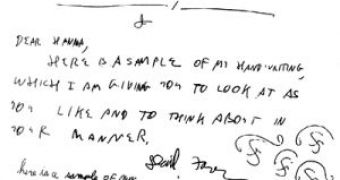Dyslexia, a Greek word meaning "difficulty with words", refers to learning disabilities, as the persons affected by this disorder cannot cope with standard, common ways of learning. They develop excellent use of visual thinking skills at an early age, they recognize real life objects, but cannot deal with printed symbols such as alphabet letters and words.
Other types of learning disabilities are: dyscalculia and dysgraphia. Dyscalculics suffer from a mathematical disability, as they cannot solve simple arithmetic problems or understand basic math concepts. Dysgraphics cannot understand or use letters or write within a defined space.
Dyslexic people are intuitive, highly intelligent and creative individuals who are visual, multi-dimensional thinkers. But because they think in pictures, they have troubles when it comes to letters, numbers, symbols, and written words.
Spatial/visual thinking is very much different from the sequential thinking. Sequential thinking is the way a normal person views the world: it is related to auditory thinking, linear through time, involving analysis and progression from simple to complex, deductive reasoning (from the parts to the whole).
On the contrary, visual thinking is a holistic system of merging and intermingling knowledge in space. It involves synthesis, intuition of complex systems, inductive reasoning (from the whole to the constituents, fragments.)
Having a neurological and genetic origin, dyslexia can be explained by the fact that individuals suffering from it process information in a different area of the brain than do non-dyslexic, average people.
10% of the people around the world have dyslexic disorders and develop abnormal ways of writing and reading: they reverse words by writing letters back to front (also known as "mirror writing" - the writing appears backwards, but when reflected in a mirror it can be read), they are not able to remember the sequence of letters in a word or sometimes read from right to left.
Also, when speaking, they encounter difficulties in putting thoughts into words, speak in unfinished phrases and leave sentences incomplete, mispronounces long words, modify phrases, words, and syllables.
Most of dyslexic children and adults have low academic results as compared to the high IQ results. This happens because they cannot learn a new lesson the traditional way, but the teacher must use some complementary techniques of teaching, such as: small steps/unities learning (small issues of information are presented to the student in order to stimulate his/her power of concentration), over-learning (repeating the new information for many times) and multisensorial presentation of the new information (through hearing, seeing, pronouncing, touching.)
Some very talented dyslexics are: Albert Einstein, Thomas Edison, Alexander Graham Bell, Leonardo da Vinci, Auguste Rodin, Erin Brokovich, Walt Disney, Winston Churchill, Cher, Whoopi Goldberg, Tommy Hilfiger etc.

 14 DAY TRIAL //
14 DAY TRIAL // 
